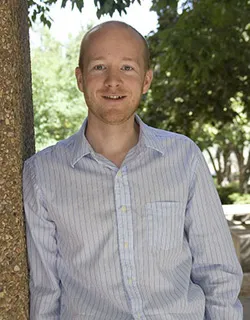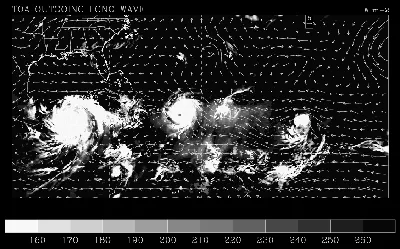James Done - Meteorologist
Deciphering tomorrow's hurricanes

James Done
Carlye Calvin, UCAR
James Done recalls how his childhood interest in weather first began. "My dad always had the weather forecast on the television and I had to sit through it every day," he says. "Something stuck, and then I was the one watching it on my own."
Today James does more than just watch. As a meteorologist, he examines weather forecasts generated by computer models to better understand storms and other kinds of severe weather as well as long-term climate. In recent years, he's been drawn to tropical meteorology and hurricanes, with an eye toward how climate change might affect hurricanes in the future.
What will happen to hurricanes?
James is part of an NCAR effort called the Nested Regional Climate Model, a project to extend the capabilities of the Weather Research and Forecasting model (WRF) to determine how hurricanes may change over coming decades as Earth's climate heats up.
"The next 50 years are important because within this period the climate is going to change, and we can't do much about it because the carbon dioxide is already in the atmosphere," trapping warmth and heating the planet, James explains. "We're interested in how tropical cyclones will change, trying to get a handle on hurricane variability, numbers, and intensity."
A postdoctoral researcher, James is part of the Willis Research Network, a partnership between scientific researchers and Willis Re, a global reinsurance broker based in London. The goal of the partnership is to evaluate catastrophes such as hurricanes, earthquakes, floods, and terrorism, since such events affect the company's clients in the insurance industry.
"Hurricanes, more than any other catastrophe, represent the greatest potential losses to the insurance industry," James says. "Insurance companies are interested in understanding what their risk is, where their risk is located, and how better to mitigate it."
Babysitting bits and bytes
During a typical day on the job, James can be found at his computer. "I babysit simulations," he jokes. He's gotten a taste of fieldwork, however, most notably at the 2003 Bow Echo and MCV Experiment (BAMEX). During this major field study of Midwestern thunderstorms, he used WRF to help guide the operations, and also evaluated the accuracy of its forecasts.

This figure is taken from a simulation using the Nested Regional Climate Model, which allows the short-term, regional WRF model to depict larger areas of the globe and longer time spans. The simulation shows two mature hurricanes in the Caribbean Sea and the birth of a tropical cyclone farther east over the tropical North Atlantic Ocean. The arrows show wind flow from Africa to the eastern United States. James uses this kind of data to explore mechanisms by which tropical cyclones develop—in particular, how atmospheric waves (disturbances in pressure, temperature, wind, or other variables) are modified as they travel through the atmosphere, creating favorable conditions for storm formation.
James's favorite thing about his job is feeling that he can make progress easily at NCAR. "Everyone's very open here and there's lots of support and collaboration," he says. "I enjoy the enthusiastic yet relaxed atmosphere. And I have freedom to explore different topics."
He doesn't like too much freedom, though. "You can get lost or go down the wrong track and waste time," he says.
He finds his limitations as a computer programmer to be the most challenging part of his job. "If I want something done, I generally have to write the code myself," he says. Answering scientific questions is another challenge, he adds. "But that's not a negative. That's what makes it interesting."
Math and science lead to meteorology
James grew up in York, England—a place that distinctly lacks the thunderstorms and hurricanes that fascinate him today. Although he spent a lot of time watching weather forecasts, it wasn't until a family vacation to France that he experienced lightning and thunder. "We had a river of hailstones running around our tent one morning," he recalls.
James always enjoyed math and science in school. At the University of Reading, he majored in math and meteorology, and then went straight into the university's doctorate program in meteorology. "It was a natural progression—I didn't fancy doing anything else," he says.
In 2002, about the time he was completing his doctorate, James attended an American Meteorology Society conference in San Antonio on severe storms. He met a number of NCAR researchers, who told him about the upcoming BAMEX project. He was inspired to apply for funding from the United Kingdom's Royal Meteorology Society to join the field campaign. "That got me involved with the WRF model, as well as being out in the field," he says.
After BAMEX, James came to NCAR for several months as a visiting scientist to write a paper evaluating WRF forecasts from BAMEX. During this time, he became interested in applying WRF to regional climate, and eventually he found himself in his current postdoctoral position.
"I'm keen on weather and climate in the tropics, specifically hurricanes, now that I've got my teeth into it. It might not have been something that I would have chosen myself, but I'm interested in staying where I am," he says. "There's lots to learn, and NCAR is a good place to do it."
James says that this tendency to go with the flow has helped him find his current research interests. "Be open to opportunities, even if you don't think they're something you want to do," he recommends.
by Nicole Gordon
August 2008